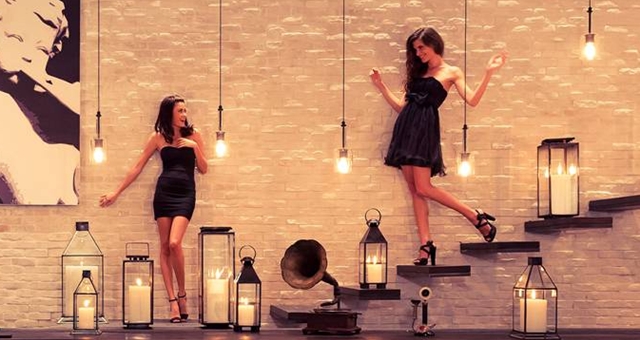By Roderick Eime in Bangkok
One doesn’t simply build a hotel these days, it seems, they must be ‘created’.
Bangkok is emerging as one of Asia’s mints for staggering hotels, each seemingly outdoing the other for high fashion, designer and ‘lifestyle’ elements. These buzzwords are defining the new wave of hotel new-builds and major refurbishments sweeping through Thailand’s charming capital of chaos, creating an entirely new stratum of accommodation excellence.
To fully understand the relevance of this latest vernacular in hotel-speak, specifically the terms ‘designer’ and ‘lifestyle’ which, on their own, are fairly self-explanatory, but when applied to the fresh wave of sexy, chic hotels springing up in the world’s grooviest locales, it helps to understand the motivating philosophy.
Cynics could be forgiven for shaking their heads and dismissing this trend as simply an exercise in marketing semantics. Just add a coat of lurid paint, a set of paisley drapes, an upside-down looking wall hanging and a Daliesque vase and – voilà – you have a designer hotel and a 50 per cent premium on your room rate. Not so apparently.
According to The Boutique & Lifestyle Lodging Association (known by the ironically amorphous acronym, BLLA), a property that ‘combines living elements and activities into functional design giving guests the opportunity to explore the experience they desire’ can be deemed ‘lifestyle’. Then ‘designer’ hotels, it would appear, go beyond that and are ‘distinctive hotels with unique architecture, where the room design is as important as the mattress. Style along with environmental concern are important factors. Design hotels vary by the unique abilities of the people who create them. Artistic expression, functionality, and imagination combine to make the most successful design hotels, and keep guest not only comfortable during their stay, but in a constant state of awe with the hotel designer’s creative vision’.
Clearly setting a lofty benchmark that goes beyond mere flophouse, these hotels certainly add a new level of flair and excitement to what can be a drab and featureless experience in many bland buildings. As an added bonus for consumers, many Bangkok rooms can be currently had for under $200, unheard of in other Asian metropolises, and driving high occupancy in tough times.
One prime example is 2009 new-build VIE Hotel, a part of Accor’s sophisticated MGallery Collection. Designed, naturally enough, through a French architectural house, J+H Boiffils’, VIE actually exercises a little restraint, but still exudes fundamental cool in its core DNA.
Accor’s MGallery collection of memorable hotels is fronted by brand ambassador, Kristin Scott Thomas, the gorgeous Anglo-French actress who has more charm in her finger nail than most of us put together.
She says the MGallery hotels are “a collection of strong personalities and sharp, strong styling but still elegant, like invitations to discover the new and the unexpected.”
MGallery is Accor’s experiential brand where the French accommodation giant seeks to identify properties with original character and unique personality. Each hotel, states Accor, is inspired by one of the three themes of the Collection. Some hotels offer ”Heritage”, places filled with history; others reflect an aesthetic universe, a style, the “Signature” of a person who inspired their vision; still others promise a relaxing refuge, “Serenity”, in a natural or urban retreat.
Then there is the relatively new branding label, Pullman, the upscale international hotel brand of Accor, that is finding itself equally at home on Thailand’s eclectic streets.
The 470-room Pullman Bangkok Hotel G, formerly the Sofitel Bangkok Silom appeals to smart younger business travellers with a bit of rough-edged retro chic mixed with a sense of playfulness and gritty urban charm. Pullman has their eye firmly on upscale business clients in major cities and is growing like crazy. Substantially restyled from its former persona, the newest Pullman in Bangkok is cheeky and fun with an uber cool terrace restaurant, Scarlett, on the 37th floor. 25 Degrees, meanwhile, do street-level “bordello” burgers with extra pizzazz.
“The motivation behind the rebranding of Pullman Bangkok Hotel G came from the need to evolve products to cater to the increasing number of younger and more savvy business and leisure travelers visiting Silom, Bangkok’s main business and entertainment district,” said Pullman Bangkok Hotel G’s General Manager, Guy Poujoulat at the May 2012 launch.
“With an increasing number of new hotels opening up in Bangkok the profound changes and upgrades we have made to the property will fit the growing demand and be paramount to our success.”
While a relatively new brand in this part of the world, Pullman has a rich heritage in the world of travel, having revolutionised long-distance accommodation and dining on American trains in the mid-19th century. Pullman railway carriages were known as Palaces on Wheels, and following their impact on the American travel scene were introduced into the UK and Europe. Accor revived the name for a network of upscale hotels in 2007 and never looked back. Already Australia’s largest 5-star hotel brand, a feat achieved just four years after debut, the Bangkok Hotel G joins GCP Hospitality stablemate Pattaya Hotel G with both a part of the global Pullman network of over 70 hotels, expected to grow to 150 properties by 2015.


